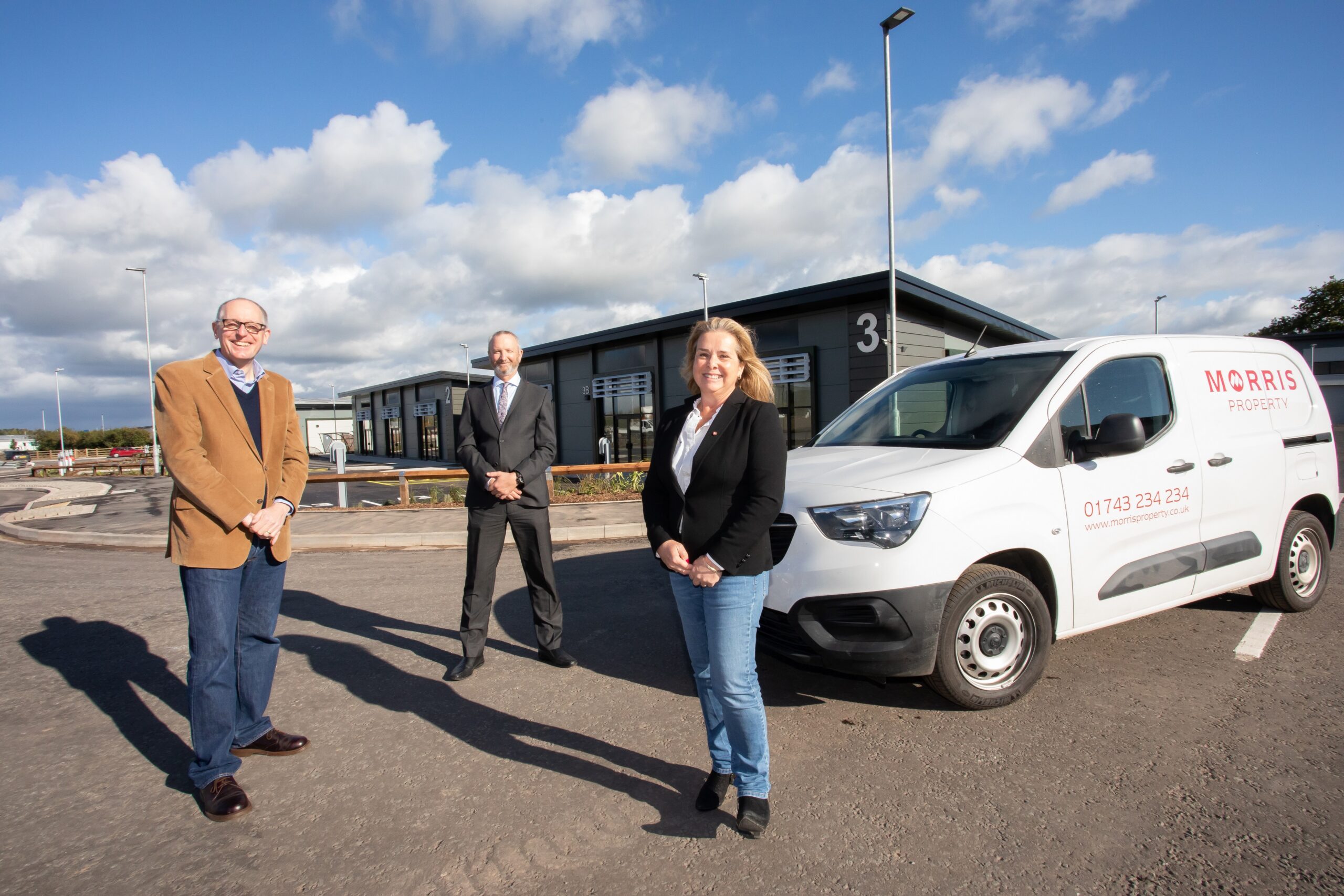The first phase of development at Ni.PARK, Telford & Wrekin Council’s newest business park, which is a £4 million scheme to create a world-leading agri-tech research and innovation hub has now been completed by developer Morris Property.
Ni.PARK in Newport, Shropshire, is a key element in the Newport Innovation and Enterprise Package, backed jointly by the Marches Local Enterprise Partnership and Telford & Wrekin Council.
The council sees the project as part of its commitment to attract inward investment to the borough, delivered through its Growth Fund, which looks to ensure the right properties are delivered in the right location.
The first phase of development comprises 24 individual units ranging from 66sqm – 351sqm (710 FT2- 2778 FT2) which are designed to suit a range of occupiers including start-ups, small businesses and larger occupiers in the agri-tech and enterprise sector.
The Shrewsbury-based construction team formally handed over the first phase of Ni.PARK, to Telford & Wrekin Council on Friday 22nd October – completing the build over 42 weeks, on time and to budget.
Morris Property’s Construction Manager Steve Flavell said: “This was an important project for Telford & Wrekin Council and the community and was a prestigious tender to have won.
“As well as creating a high quality development, Ni.PARK has enviable green credentials, with electric vehicle charging points and PV solar panels, together with sustainable drainage systems (SUDS) and ecological enhancements.”
Councillor David Wright, Telford & Wrekin Council’s Cabinet Member for Economy, Housing, Transport and Infrastructure, said: “Ni.PARK will have a significant, positive impact on local people and the local economy.
“The development of this new hub will put Newport at the heart of the UK’s latest agricultural technology and attract a variety of agri-tech related businesses and employers to the site.
“It’s really exciting to see the first phase of the programme completed and is a development which has taken an outstanding, environmentally friendly approach.
“Innovative projects like this are instrumental in attracting new investment to the borough.
“Ni.PARK will create a variety of employment opportunities for local people – bringing together agricultural and technical companies and industry experts to drive growth and support innovation.”
When completed the Ni.PARK will offer companies a range of units for agri-tech and enterprise occupiers suitable for R&D, light industry, general industrial and storage, with planning use classes B1, B2 and B8.
Mandy Thorn MBE, chair of the Marches Local Enterprise Partnership, said: “The importance of Ni.PARK to our region is immense which is why we have supported it with £7.36m of Local Growth Fund investment as part of the wider Newport Innovation and Enterprise package.
“This is further evidence of the LEP working with its partners to create a dynamic and innovative business environment which will create real growth, jobs and opportunity.”
Lucy Blasdale, Development Director for Homes England, said: “Homes England is delighted to see the first phase of units complete at Ni.PARK, providing opportunities for new and growing business within the Borough of Telford & Wrekin plus existing companies looking to locate in the Borough.
“This is another great example of how public sector partners are working together in the interests of maximising economic growth, job retention and job creation in Telford and Wrekin.”
